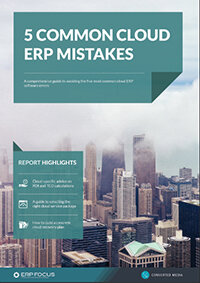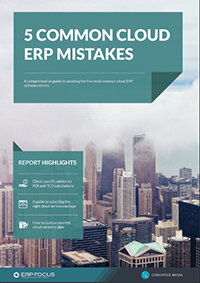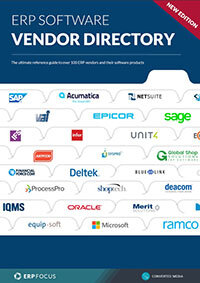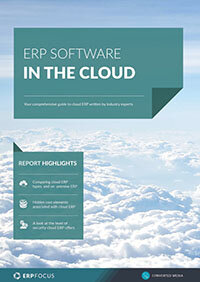Cloud ERP vs on-premise ERP: an objective comparison
Which method of accessing your ERP is best? The answer…it depends. Here are several key areas to consider when deciding between cloud and on-premise deployment for your software.
Servers
Cloud ERP systems are deployed on servers managed by your ERP provider. You rent space for your data and the provider keeps it safe and secure. Your data is on the same servers as another client’s but they are kept separate.
With on-premise ERP, your data is kept on your servers. Your IT people keep them running and manage security and backups. Only your data is on that server.
There's also an in-between choice. You can own the software license but keep the ERP and your data on a third party server. Amazon and others will rent you disk space and they manage much of the security. This cloud deployment is therefore not on the provider’s server.
GET ERP RESEARCH & KNOWLEDGE RIGHT TO YOUR INBOX
Covering the key issues faced by businesses selecting and implementing ERP.
Payment
If you choose a cloud ERP, you will agree to regular payments, usually monthly. Often there is no upfront payment required. Your payments go on as long as you use the cloud ERP.
Guide: Five common cloud ERP mistakes
If you choose on-premises, you will purchase a license to use the ERP and pay a single upfront payment. You will also pay annual support fees that cover system upgrades, bug fixes, etc. Access to the provider’s help desk is included too.
There is a break-even point where the higher initial cost of on-premise ERP becomes cheaper than an ongoing monthly subscription fee. Do the math yourself and make your choice. ERP providers that offer both types of deployment will always convert from cloud to on-premises and the license cost will be reduced. This could be a good choice for your business.
Customization and Integration
These options are available with cloud systems but can be limited in some cases. Talk to your provider and talk to partner businesses as well. The provider might want to provide the needed connections and limit outside links. Often there are third-party integrators available but they might not be easy to find.
For on-premise systems on the other hand, integration and customization are as available as the money you want to spend. Your data is under your control in your own server. The potential downside is that as the ERP provider improves their core system, some of your customizations might be incompatible unless you also rework the software you added.
Support
Your cloud subscription fee will include easily available help desk support. Your ERP provider will keep your system at the most current revision at all times so you see immediate bug fixes and software improvements. You also will get a copy of your data for training or experimentation that is regularly refreshed.
If you choose on-premise ERP, and choose to maintain your annual support agreement, you will have access to the same improvements and bug fixes, but your IT staff will need to load those upgrades. You can, however, defer revision upgrades when you find nothing in that upgrade applies to your business or there could be a problem with some customization.
Both cloud and on-premise ERP are excellent choices in the right circumstances. Understand those choices and how they apply to your business and you will have the power of ERP helping you.
Free white paper

Five common cloud ERP mistakes
Get your comprehensive guide to avoiding the five most common cloud ERP errors

Featured white papers
Related articles
-

Top ERP systems for small businesses
Which ERP solutions are best for small business needs? Information on features, scalability and m...
-

CMMC Compliance: What Aerospace and Defense Manufacturers Need to Know
Key insights on CMMC compliance, deadlines, and securing DoD contracts with CMMC 2.0 certificatio...
-

The 10 best construction ERP systems
Include these ERP systems when selecting or comparing construction ERP



